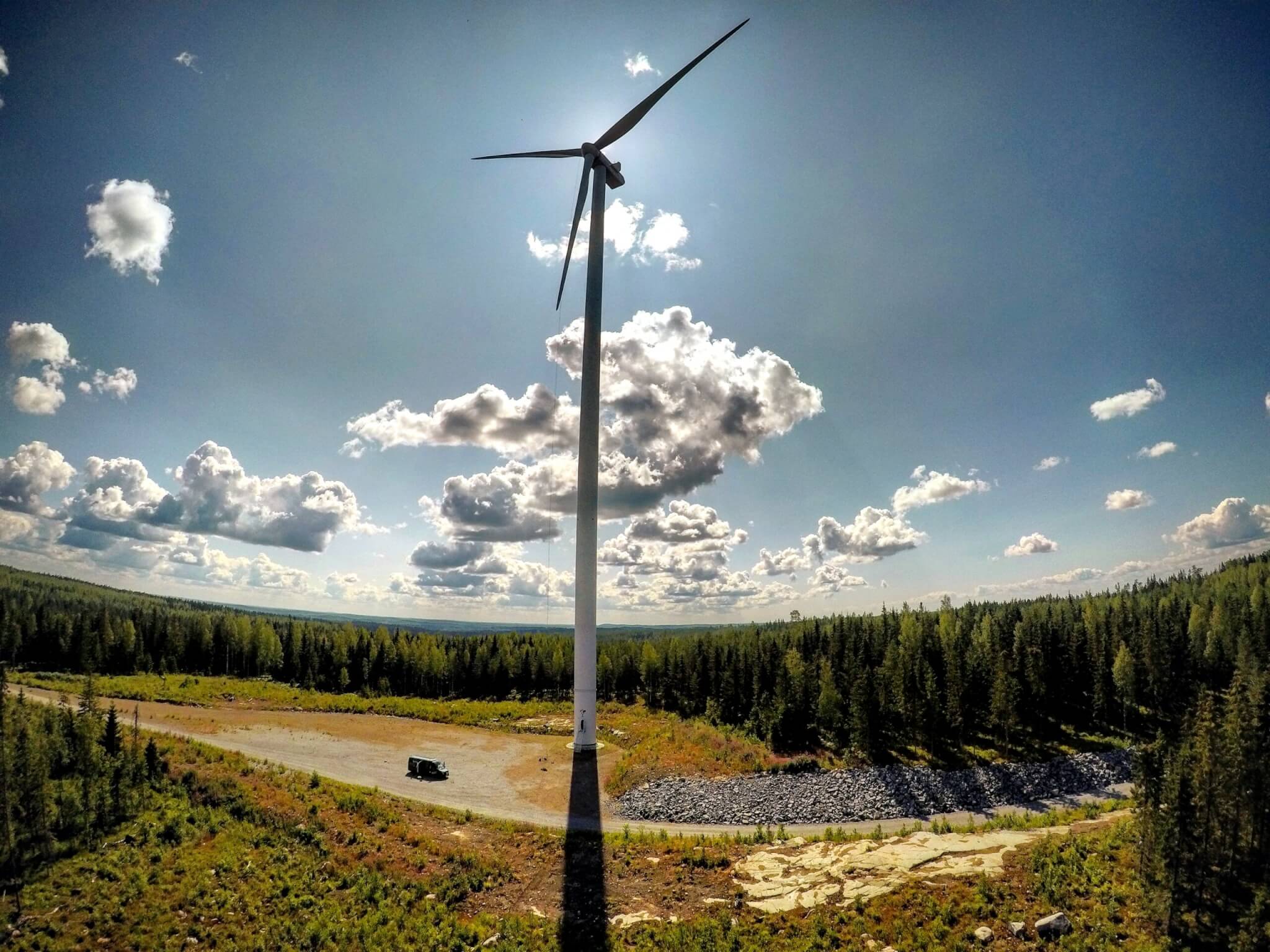Warranties and maintenance
The warranty period included in the wind turbine procurement contract depends on the contract between the turbine supplier and buyer, and it is usually tied to the validity of the maintenance agreement. In addition to a materials warranty, the warranty period also normally includes an availability warranty. In the availability warranty, for example, a 95% utilisation rate of turbines is guaranteed.
Operation and maintenance agreements
The owner of a wind turbine can either draw up a maintenance agreement with the turbine supplier or manage the turbine’s operation and maintenance (O&M) within its own organisation or as an outsourced service. During the warranty period, it is usually required to have a maintenance agreement with the turbine supplier in order to keep the warranty in force. The length of a maintenance agreement drawn up with the turbine supplier in connection with purchasing the turbines varies on a case-by-case basis, with a typical length of agreement being 5–12 years. After the warranty period has expired, it is usually still possible to purchase operation and maintenance services either from the turbine supplier, as an outsourced service from a third party, or carry it out yourself.

Wind turbine maintenance
The operation and condition of wind turbines are monitored around the clock. Usually, turbines are monitored and operated by their manufacturer, but often the owner also wants a third party to carry out monitoring concurrently with the manufacturer’s monitoring. In Finland, there are operators specialised in operational control.
Efficient maintenance is of utmost importance to the financial success of the project. The maintenance strategy is planned at an early stage in connection with the rest of the project planning.
Matters to be taken into account include, e.g.:
- location of maintenance staff and the maintenance response time
- spare part arrangements (where spare parts are stored – in the company’s own or the turbine supplier’s premises, the amount of the planned inventory of materials and spare parts to acquire, etc.)
- operator and safety training also required of the owner
- obtaining maintenance and operation data from the party responsible for maintenance
- operation and maintenance instructions.
Although there is a strong employment effect on the municipality during the building of the wind turbines, the operation and maintenance of the wind turbines provide the most employment during the life cycle of the turbines. At the most optimal level, three wind power technicians manage just over twenty turbines. However, this optimal level is rarely reached in practice due to long distances and the small size of wind farms in Finland. Therefore, according to a rough estimate, per ten turbines, you need two managers living in the travel-to-work area. Work on the wind turbines is always carried out in pairs for safety reasons.
Maintenance requires expertise
The maintenance work of wind turbines requires specialist skills, and therefore the maintenance staff must have extensive and constantly updated qualifications not only on the maintenance of turbines, but also, e.g. on working at height, hot work, first aid, and rescuing oneself and others from a turbine. In addition to technical know-how, the maintenance staff is normally required to, e.g. have language skills, be prepared to travel, be of good physical condition and health and, naturally, not have fear of heights. There is a shortage of wind power technicians in Finland. Often many technicians have, e.g. electrician’s qualifications and experience before specialising in the wind power industry.
Several companies specified in the maintenance of wind turbines as well as maintenance points of turbine manufacturers have been established in Finland. Many companies often export their specialist expertise, for example, on inspections and repairs of blades before installation and operation.

Acting in the community
The way representatives of the wind industry act and behave in the municipalities where their projects are located has an impact on how our industry is seen by the public. It is therefore important to act with this information in mind. When active in Finnish municipalities, you do not only represent your company, but also the industry as a whole. Finland is a small country and especially negative news spreads very easily. Whatever your role in a wind energy project might be, it is mandatory and obvious that you follow Finnish laws and regulations.
Safety at workplaces as well as employees’ rights are of great importance here. Generally, honesty and transparency play an important role in Finnish society and these are key attributes that are related to a good project. Dealing with all stakeholders and interest groups in an equal and fair way is a good habit and should be followed by everyone. Informing locals on important matters is a common practice and it is legally a part of every land-use planning process. Certain areas in Finland have different habits and customs that one should be aware of. Something that is considered a working method or acceptable behavior in other countries, might not necessarily apply to Finland.
The EIA and spatial planning processes include public information and discussion events as an essential part, but additional public events should also be organized. The local press should also be informed about the progress of the project – it is often happy to receive information about the project and pass it on to the local community.